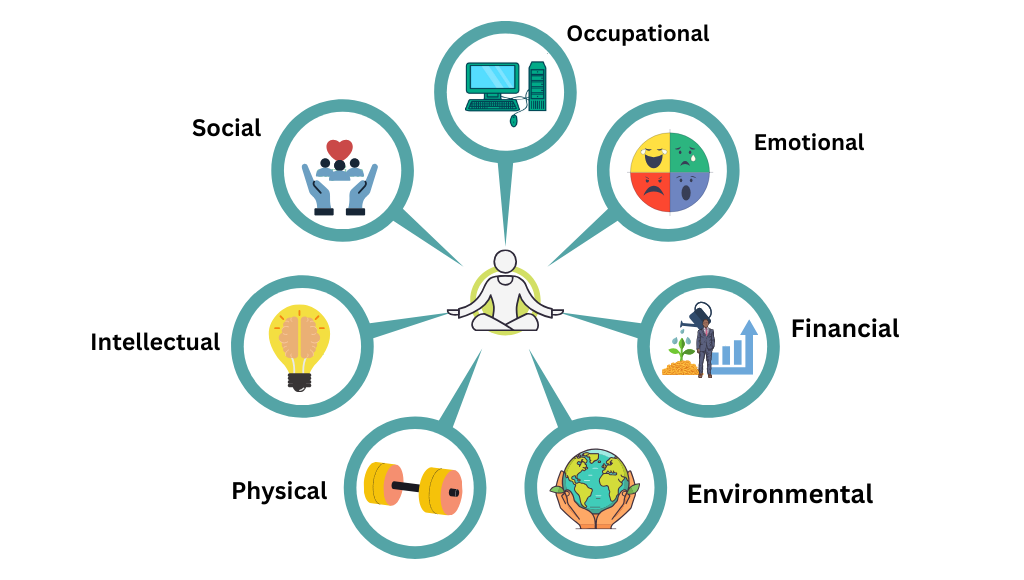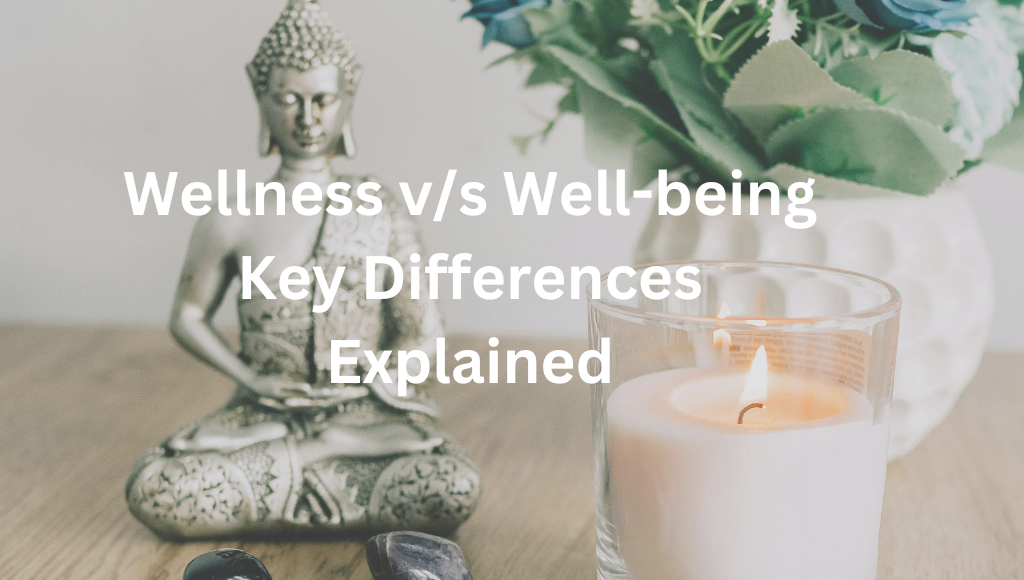
The term’ wellness’ seems broad, involving several activities all aimed at feeling good, healthy, and fulfilled. A sound understanding of the different types of wellness allows a person to try to create equilibrium and center his or her life around it. Differentiating wellness can assist one in achieving a balanced and healthier lifestyle; hence, in this guide, we will discuss the topic of types of wellness: its importance and purpose, as well as how to activate or encourage each.
1. Physical wellness: Treat Your Body Right
This is really important as one’s attitude or outlook on their day-to-day life is highly influenced by how active they are. A key component of physical vitalism is prioritizing physical exercise, dietary habits, and quality sleep. This is an important step as it creates a good start because seeking to become physically fit and healthy can affect us positively.
Highlights: Work out regularly, consume adequate food, drink sufficient water, and rest properly.
Best Practices:
- Setting aside a moment of at least 30 minutes a day to perform an activity, be it walking or working out, is beneficial.
- Selecting a diet relying on fruits and vegetables while including lean meat and whole grains is wise.
- We should emphasize sleep since it permits the muscles to relax and the body to recover.
2. Mental Wellness: Taking Time to Sought Out the Mind.
Mental wellness also protects the mind from stress. With a sound mind, one is able to go through life with a good attitude and the strength to face any difficulties that come their way.
Key Aspects: Continuous improvement of oneself, Innovation and creativity, critical thinking, and handling stress.
Practical Tips:
- Take part in activities that require structural thinking and concentration. These include reading, solving puzzles, and learning new things.
- Cultivate wise thoughts by practicing meditation to remain calm and stress-free.
- Pursue activities that bring out your creative side, such as painting or writing.
3. Emotional Wellness: Understanding and Expressing Regard.
The emotions we feel should not control us. The same ability to be in control of one’s emotions is what stress management involves. In this way, through the vistas of our emotions, we can reach our goals. Emotions classification From this perspective, emotional wellness, stability, and change become optimal targets.
Key Aspects: Understanding oneself, controlling emotions, understanding other people.
Practical Tips:
- Write down how you feel each day in a diary.
- Feelings of resentment or judgment can be put aside by trying to listen to others with empathy.
- Stress levels can be reduced effectively by deep breathing or talking with a friend.
4. Social Wellness: Accept the Truth We Can Not Never Forget the Big D.
Social Wellness is about friends interacting with one another and forging friendships while simultaneously looking after their family and community. This form of wellness promotes good relations and, in turn, enhances our mental and emotional health.
Key Components: Building relationships, effective communication, and connecting with others.
Practical Strategies:
- Make regular voice or video calls to your family and friends.
- Participate in active community groups or volunteer groups to increase your social network.
- To further your productive set of relationships, enhance your active listening skills.
5. Environmental wellness: Coexisting with the Natural World
Environmental wellness is about decision-making, which is good for our well-being and for the planet. It’s one such type of wellness that helps motivate enduring patterns of behavior that contribute to individual and global health.
Key Components: Creating a healthy, positive working environment, sustainability, and eco-literacy.
Practical Strategies:
- Buy fewer products, use recyclable goods and products, and avoid mass consumption.
- Declutter and clean your environment as it greatly aids in brain function.
- Spend time outside as it helps you be in touch with the natural world.
6. Occupational wellness: Doing Something You Care About At Work
Occupational wellness means pursuing self-fulfillment through work, academics, or community service. It is a necessary type of wellness since many of our waking hours are spent at work, and being content with it may make us happy.
Key Components: Work-life integration, career development, and overriding sense of satisfaction from one’s job.
Practical Strategies:
- Limit working hours, allocate time for leisure activities, and earn adequate rest.
- Look for and find some achievements, self-improvement insights, or new knowledge.
- Pick a profession or a position that reflects your worth, or you will have less contentment.
7. Mental Wellness: Finding Self, Meaning and Direction
Spiritual wellness is a more broad understanding that encompasses a broader perspective. For some, searching for meaning may involve religious beliefs, but in essence, searching for a purpose involves other practices as well.
Key Aspects: Purpose, Connection, and Gratitude.
Practical Tips:
- Self-reflect using a journal: writing or doing some meditation.
- Show appreciation for life by appreciating those goods and services you use each day.
- Go out into the world, meet people who inspire you, or spend some time in nature to feel connected.
8. Financial Wellness: Dealing with Money Natively
For financial well-being, focus on smart decisions regarding money in order to experience fewer worries about money. Money gives a sense of stability, and therefore, a lack of it creates stress. In the end, receiving this outcome creates a sense of relief in one’s life.
Key Aspects: Financial Resilience, Investment, Strategic Rift.
Practical Tips:
- Avoid spending more than what is available by making a budget.
- Start accumulating savings with time, regardless of your earnings, in order to receive a degree of comfort.
- Understand the fundamentals of finance so that you opt for smart options.
9. Intellectual Wellness: Enlarging The Scope of Your Mind
Intellectual wellness is exercising the mind and always trying to remain engaged. By constantly being curious and wanting to learn things, we are allowing our neurons to work, hence encouraging our thinking process to be more diverse.
Key Points: Self-education, inventiveness, and interest.
Practical Advice:
- Explore a new pastime. Try learning a new spoken language or playing an instrument, for example.
- Express yourself through drawing, music, or other artistic means and work the head.
- Check out different books, articles, and workshop events to keep active.
Conclusion: Acceptance of all dimensions of well-being
Working towards a balanced lifestyle entails recognizing other types of wellness to achieve complete integration. For example, physical and emotional well-being, financial health, growth, and ecology are all important in one way or another toward one’s happiness. Begin with one or two wellness types and slowly work towards incorporating others as you get acclimatized. When you put more emphasis on these aspects, you will automatically become a healthier, more positive, and happier individual.



